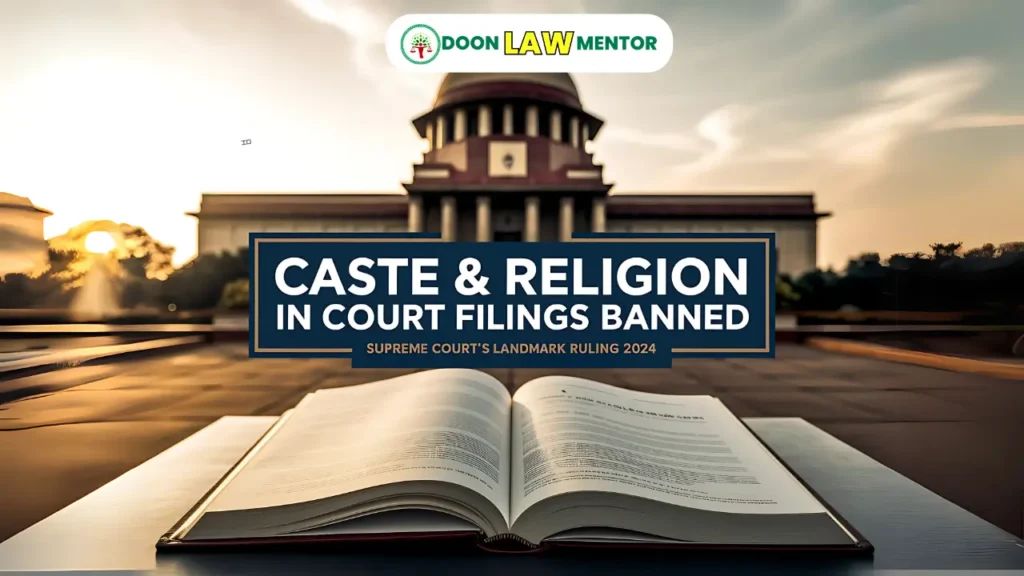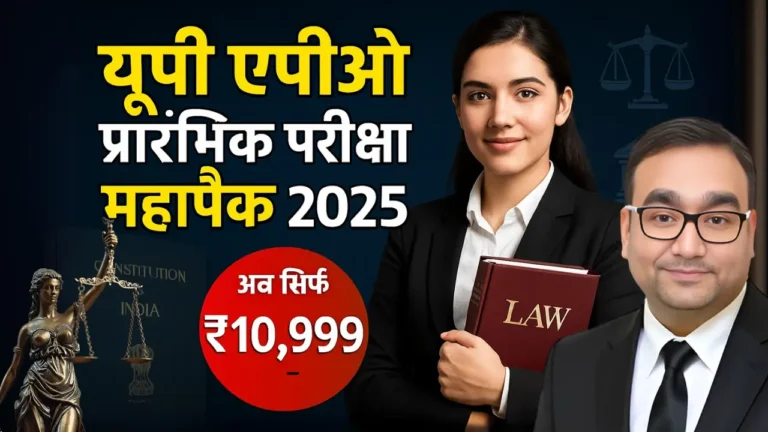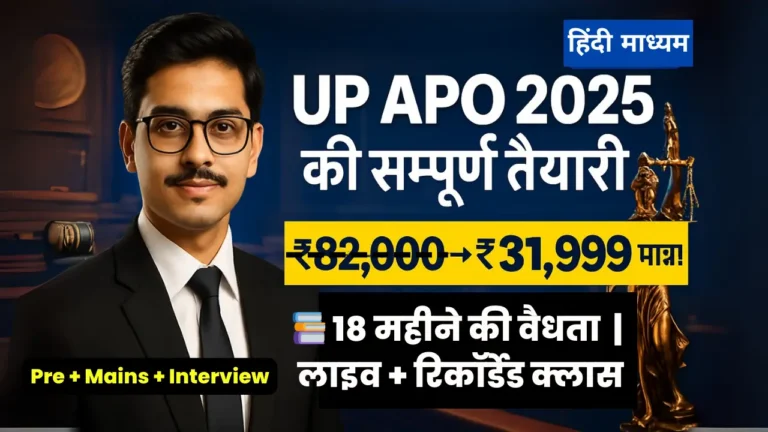In a landmark judgment in Shama Sharma v. Kishan Kumar (2024 SC), the Supreme Court of India has banned the mention of caste or religion in court filings. This progressive ruling ensures judicial neutrality, upholds equality, and reinforces secular values in legal proceedings across all courts in India.
In a progressive and landmark ruling, the Supreme Court of India, in the case of Shama Sharma v. Kishan Kumar (2024 SC), has directed that the caste or religion of parties should no longer be mentioned in any filings before courts across the country. This decision reflects the judiciary’s commitment to fostering equality and secularism, key principles enshrined in the Constitution of India.
The directive, passed by a Bench of Justices Hima Kohli and Ahsanuddin Amanullah, is expected to bring uniformity and neutrality to judicial proceedings, ensuring that no litigant is prejudiced based on their caste or religion.
Table of Contents
Background of the Case: Shama Sharma v. Kishan Kumar (2024 SC)
The judgment emerged during the hearing of a transfer petition in a family dispute between a husband and wife. The memo of parties in the case included the caste details of the litigants, which prompted the Court to take immediate action.
Key Observations by the Bench
- Caste/Religion Mention Unnecessary: The Court stated unequivocally that there is no reason to mention caste or religion in any judicial filings.
- Practice to be Shunned: The Bench declared that the practice of referencing a litigant’s caste or religion must cease forthwith in all courts, including the Supreme Court, High Courts, and subordinate courts.
- Uniform Compliance: The directive applies irrespective of whether caste or religion details were provided in lower courts.
Order for Immediate Implementation
- A copy of the judgment was directed to be placed before the Registrar for compliance.
- The Registrar Generals of all High Courts were instructed to ensure the implementation of this directive across subordinate courts within their jurisdictions.
Legal Reasoning Behind the Judgment
The Supreme Court’s order is deeply rooted in the constitutional values of equality and secularism:
1. Article 14: Equality Before the Law
The mention of caste or religion in judicial filings can inadvertently influence the perception of the court and parties involved. By eliminating this practice, the Court reinforces the principle that all individuals are equal before the law, regardless of their social or religious identities.
2. Article 15: Prohibition of Discrimination
Discrimination based on caste or religion is explicitly prohibited under Article 15. Removing such identifiers from judicial filings ensures neutrality and prevents any potential bias in legal proceedings.
3. Article 21: Right to Dignity
The judgment aligns with the right to dignity, as references to caste or religion may subject individuals to stigma or prejudice, undermining their fundamental rights.
Key Highlights of the Judgment
- Applicability Across All Courts:
- The directive applies to all petitions, suits, and proceedings filed before the Supreme Court, High Courts, and Subordinate Courts.
- It is binding irrespective of whether caste or religion details were mentioned in previous proceedings.
- Non-Compliance by Registries:
- The Bench addressed concerns about registry objections in cases where caste details were included in earlier court filings.
- It emphasized that such objections are invalid and that compliance with the new directive is mandatory.
- Historical Context:
- The judgment follows a similar observation made by a Bench led by Justice Abhay S. Oka in 2023, which criticized the practice of mentioning caste or religion in the cause title of judgments.
Impact of the Judgment
The Supreme Court’s directive is expected to have far-reaching implications for the Indian legal system and society at large.
1. Promoting Secularism in Judiciary
- The judgment eliminates references to caste or religion, aligning judicial practices with India’s secular ethos.
- It reinforces the neutrality of courts, ensuring that decisions are based solely on the merits of the case.
2. Reducing Bias and Prejudice
- Removing caste and religion identifiers minimizes the risk of conscious or unconscious bias among judges, lawyers, or other stakeholders.
3. Enhancing Litigant Confidence
- By ensuring a level playing field, the directive boosts public confidence in the judiciary, especially among marginalized communities.
4. Ensuring Consistency Across Jurisdictions
- The order mandates uniform compliance across all courts in India, bringing consistency to judicial processes.
Challenges and Implementation
While the judgment sets a progressive precedent, its implementation may encounter certain challenges:
1. Legacy Practices in Subordinate Courts
- Subordinate courts often rely on traditional practices, including mentioning caste or religion in filings. Effective training and awareness campaigns will be required to ensure compliance.
2. Registry Resistance
- As noted in the case, registry officials may initially resist changes, citing procedural norms. Clear guidelines and accountability mechanisms will be essential.
3. Monitoring and Enforcement
- The Registrar Generals of High Courts must play an active role in monitoring compliance across subordinate courts.
Significance of the Judgment
A Step Toward Judicial Neutrality
The Supreme Court’s directive is a milestone in judicial reform, ensuring that personal identifiers like caste and religion have no bearing on legal proceedings.
Fostering Inclusivity
The judgment fosters inclusivity, particularly for individuals from marginalized communities, by ensuring that their identity does not impact their access to justice.
Setting a Precedent
This decision sets a powerful precedent for other legal and administrative bodies to eliminate unnecessary references to caste and religion, promoting equality and fairness in all spheres.
FAQs on the Supreme Court Directive
1. What is the key takeaway from the Shama Sharma v. Kishan Kumar judgment?
The Supreme Court directed that caste or religion of parties should not be mentioned in any filings before courts, including the Supreme Court, High Courts, and subordinate courts.
2. Why did the Supreme Court issue this directive?
The Court emphasized that references to caste or religion in filings serve no legal purpose and may lead to bias, thereby violating constitutional principles of equality and secularism.
3. Does this directive apply to previous cases where caste/religion was mentioned?
Yes, the directive applies regardless of whether caste or religion details were included in filings in lower courts.
4. How will the directive be implemented across courts?
The Supreme Court has directed the Registrar Generals of all High Courts to ensure compliance within their jurisdictions, including subordinate courts.
5. What challenges might arise in implementing this directive?
Challenges include legacy practices, registry objections, and the need for monitoring compliance in subordinate courts.
Conclusion
The Supreme Court’s decision in Shama Sharma v. Kishan Kumar (2024) marks a paradigm shift in Indian judicial practices by eliminating the mention of caste or religion in court filings. This landmark ruling upholds constitutional values of equality and secularism, ensuring that justice is delivered without bias or prejudice.
As India continues its journey toward a more inclusive and equitable society, this judgment serves as a beacon of progress, reminding us that justice must always be blind to identity and guided solely by the rule of law.
#SupremeCourtJudgment #JudiciaryReform #SecularIndia #EqualityBeforeLaw #ConstitutionalRights #DoonLawMentor







